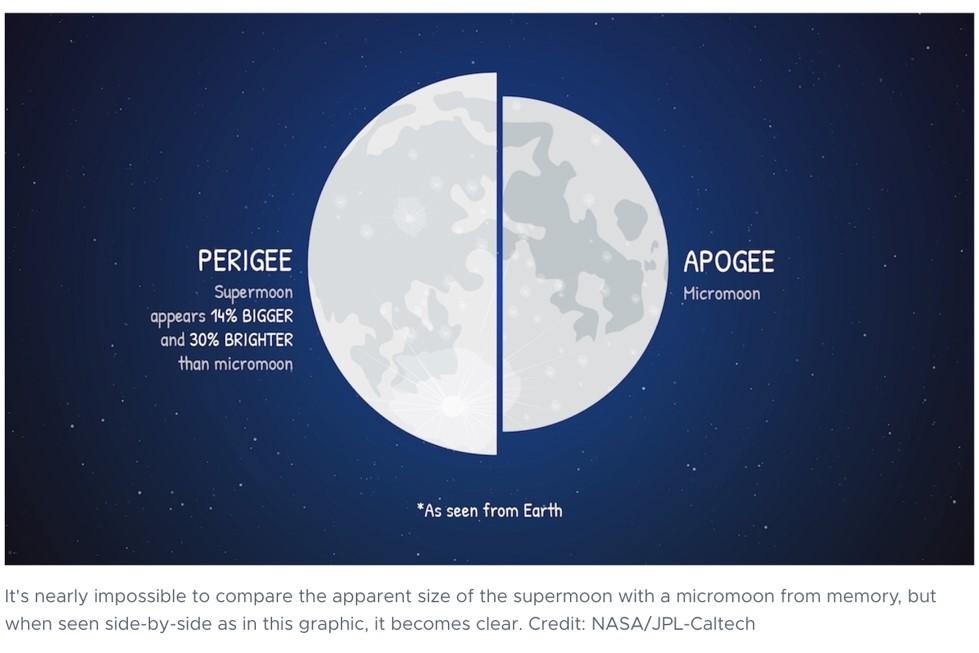
Date:
If you’re looking to up your dose of lunar light, tomorrow's the night to get a full charge. The next full moon occurs August 30 at 9:36pm ET. More importantly, it occurs on the day of this year’s penultimate Supermoon, a full moon that occurs during perigee -- when the moon is closest to earth in its monthly orbit. It's also the second full moon this month, making it a "blue moon." I guess we can call it a Super Blue Moon!
What does this actually mean? Each month, the moon follows an elliptical orbit around Earth. The point at which it’s closest to Earth is called perigee. The most distant point is called apogee. When a full moon coincides with the perigee, the moon appears a bit larger and brighter than the other full moons of the year. A supermoon, theoretically. The challenge is how to compare the perigee full moon size and brightness to a regular full moon’s size and brightness as you observe on that special night. One way to check the change is to measure the moon’s diameter using a measuring tool, once the moon is well above the horizon, up near the top of the sky. Be sure to record your measurements, you’ll need them next month. Measure the moon’s diameter again at the next full moon using the same measuring tool and with the moon at a similar height as the previous month. Record your measurements again and compare to the previous month’s measurements. Is there a difference?
Here's another moon size experiment to try. Measure the size of the full moon as it’s rising but still down closer to the horizon. Record your measurements. Wait until the moon is near the top of the sky and measure it again. Now check this measurement against the earlier measurement. Is there a difference? Try to explain what your answer indicates.
There is a well-known optical illusion caused by the moon’s appearance when it’s down low in the sky, close to the horizon. Seeing it close to objects of known size, like buildings or trees, makes our brain interpret the moon’s size as enormous. Notice how much smaller it looks later in the evening when seen near the top of the sky. Because of the illusion, we can get the supermoon experience almost every month as the full moon rises or sets. No matter how your measurements work out, enjoy the summer moonlight!


